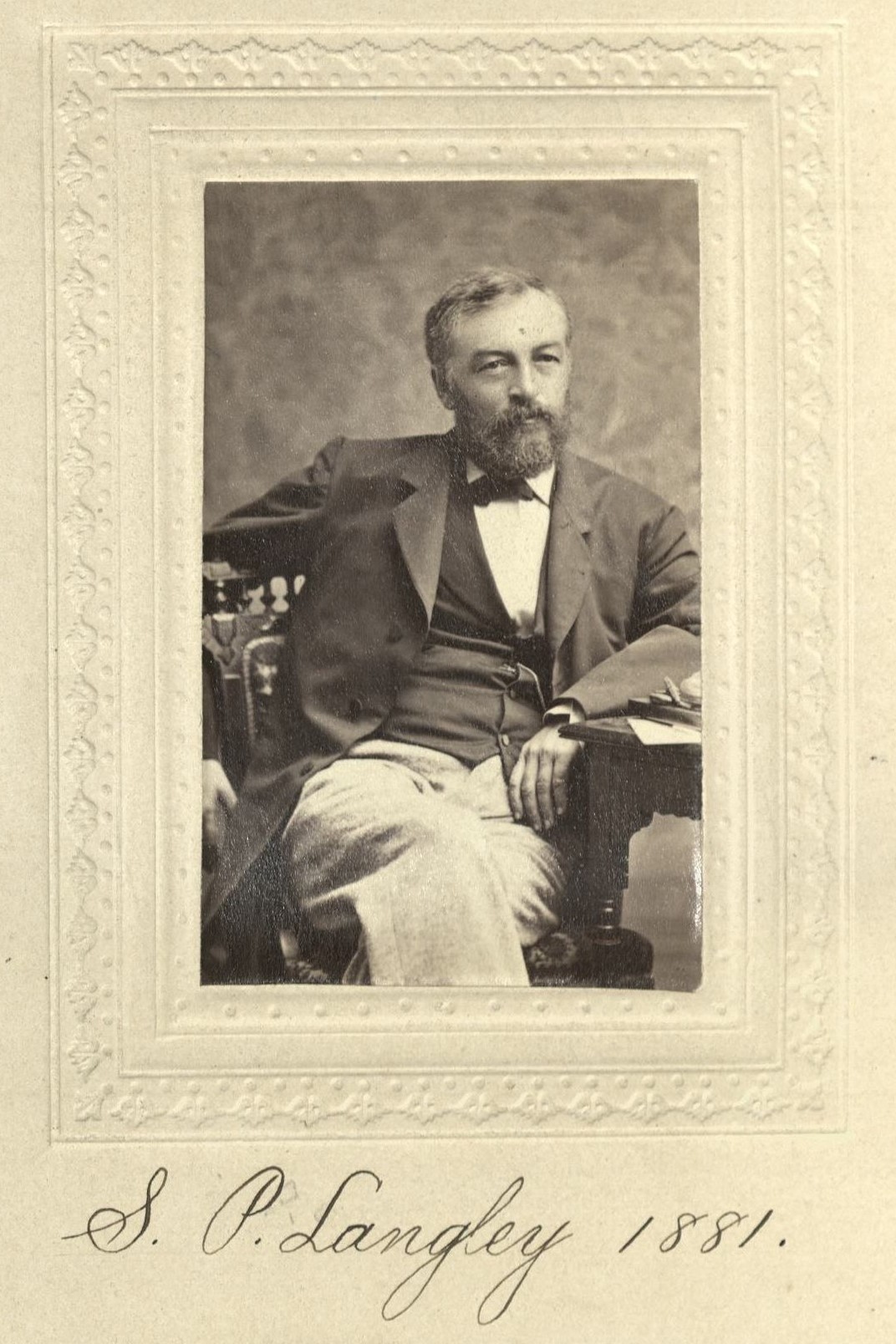Astronomer/Aviation Pioneer
Centurion, 1881–1906
Born 20 August 1834 in Boston, Massachusetts
Died 27 February 1906 in Aiken, South Carolina
Buried Forest Hills Cemetery and Crematory , Jamaica Plain, Massachusetts
, Jamaica Plain, Massachusetts
Proposed by Isaac Newton and Chandler Robbins
Elected 7 May 1881 at age forty-six
Seconder of:
Century Memorials
Professor Samuel Pierpont Langley had been a member of The Century for twenty-five years at the time of his death at the age of seventy-two [sic: seventy-one]. Although he received at various times the degree of LL.D. from five American universities, that of D.C.L. from Oxford, and of D.Sc. from Cambridge, with many other honors at home and abroad, he did not have a collegiate education. Nor did he very early in life take up the studies in which his remarkable reputation was made. In 1867, at the age of thirty-three, after a brief service in the Observatory at Harvard and as Assistant Professor of Mathematics at the Naval Academy, he became director of the Allegheny Observatory, and three years later began his researches in astral physics, more especially in the domain of solar radiation, which made him known and respected throughout the scientific world. In 1887 he was appointed Secretary and executive officer of the Smithsonian Institution, where he labored with distinguished success for the remainder of his life. His contributions to astro-physics are highly valued by scientists. They related to the problem of determining the “solar constant” at the outskirts of our atmosphere and before this has exerted its absorbing influence, and to the determination of the temperature of the moon’s surface and the phenomena transpiring on that of the sun. He invented the “bolometer,” an electrical device by which the minutest quantities of radiant energy can be measured. It was to him primarily that we owe our present system of standard time, which is, perhaps, the most practically valuable of the modern applications of science to the daily business of men. And he was the originator of the National Zoölogical Park at Washington. A man of almost unlimited capacity for labor, Professor Langley combined in a singular degree energy and patience, inventiveness and vigilance. Habitually somewhat reserved or absorbed, he was, when his interest was enlisted, a charming companion and as such will long be remembered in The Century.
Edward Cary
1907 Century Association Yearbook
Langley, born in Massachusetts, was an assistant at the Harvard College Observatory before becoming chair of mathematics at the Naval Academy. In 1867, he became the director of the Allegheny Observatory and a professor of astronomy at the Western University of Pennsylvania (University of Pittsburgh), a post he kept until 1891. Langley was the founder of the Smithsonian Astrophysical Observatory.
His first success with a flying machine came on May 6, 1896, when an unpiloted model flew nearly a mile after a catapult launch from a boat on the Potomac River. The distance was ten times longer than any previous experiment with a heavier-than-air flying machine. Later that year his Number 6 model flew more than 5,000 feet.
In 1898, Langley received a War Department grant of $50,000 and $20,000 from the Smithsonian to develop a piloted airplane he called the Aerodrome. In contrast to the Wright brothers’ design of an airplane that could fly against a strong wind and land on solid ground, Langley sought safety by practicing in calm air over the Potomac River. His craft had no landing gear, the plan being to descend into the water after demonstrating flight. He gave up the project after two crashes in 1903.
A heavily modified Aerodrome was flown a few hundred feet by Glenn Curtiss in 1914, as part of his vain attempt to fight the Wright brothers’ patent. However, the Curtiss flights emboldened the Smithsonian to display the Aerodrome as “the first man-carrying aeroplane in the history of the world capable of sustained free flight.” Fred Howard wrote: “It was a lie pure and simple, but it bore the imprimatur of the venerable Smithsonian and over the years would find its way into magazines, history books, and encyclopedias, much to the annoyance of those familiar with the facts.” The Smithsonian’s action triggered a decades-long feud with the surviving Wright brother, Orville.
James Charlton
“Centurions on Stamps,” Part I (Exhibition, 2010)

